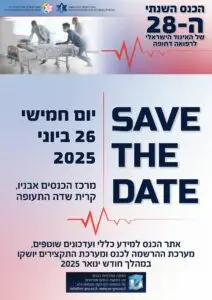פוסט זה זמין גם ב:
עברית
Podcast: Play in new window | Download
“This learning material is sourced from Emergency Medicine Cases and has been published here with permission as per creative commons copyright”
Topics in this EM Quick Hits podcast
Heather Cary on the use and misuse of abdominal FAST in pediatric trauma (0:38)
Hans Rosenberg and Arleigh McCurdy on the diagnosis and management of Multiple Myeloma in the Emergency Department (7:57)
David Jerome on wilderness practice tips for managing the drowning patient (13:50)
Brit Long and Michael Gottlieb on the diagnosis and management of Alcohol-Induced Ketoacidosis (31:58)
Navpreet Sahsi on his journey to becoming a humanitarian and global EM doctor (38:13)
Podcast production, editing and sound design by Anton Helman
Podcast content, written summary & blog post by Alex Chan, Heather Cary, Hans Rosenberg, Arleigh McCurday, David Jerome, Brit Long, Navpreet Sahsi and Michael Gottlieb, edited by Anton Helman
Cite this podcast as: Helman, A. Cary, H. Rosenberg, H. McCurdy, A. Jerome, D. Long, B. Gottlieb, M. Sahsi, N. EM Quick Hits 48 – FAST in Pediatric Trauma, Multiple Myeloma, Drowning, AKA, Global EM. Emergency Medicine Cases. April, 2023. https://emergencymedicinecases.com/em-quick-hits-april-2023/. Accessed April 26, 2023.
Abdominal FAST exam does not improve outcomes and may complicate pediatric traumas
- Despite abdominal FAST exams being commonly used in North America, literature suggests that FAST has low sensitivity (estimated to be 28% for EM physicians) and high false-negative rate without improving clinical outcomes
- Only two-thirds of children with intraabdominal injuries would have positive FAST with free fluid
- As the majority of intraabdominal injuries are managed conservatively, providers should avoid using positive FAST as the deciding factor to order abdominal CT. They should instead use the clinical picture of the patient and indications such as:
- Significant abdominal wall trauma
- Seatbelt or handlebar sign
- GCS < 14 in blunt abdominal wall trauma
- Abdominal tenderness and/or distention
- Persistent hypovolemia
- PR/NG blood
- Gross hematuria
- Suspected pelvic fracture
Tips on the diagnosis and management of patients with multiple myeloma in the ED

- As patients with multiple myeloma are immunocompromised, they may additionally present atypically with opportunistic infections such as CMV and listeria
Episode 33: Oncologic Emergencies
Understanding drowning -Wilderness Medicine EM Quick Hits series

- Categorization of drowning: fatal or nonfatal, and primary (where it is the only medical issue at play) or secondary (where another medical issue directly precipitated the event)
- There is a trimodal distribution of fatal drowning
- Aged 1-5: The majority of events are primary in nature
- Aged 15-25: Events are usually secondary to high-risk events, traumas, or intoxications
- Aged 55+: Be strongly suspicious of ACS as the precipitating event
- Drowning is primarily a respiratory/hypoxic event and should be managed as such:
- Management should therefore be focused on high PEEP and FiO2
- Arrhythmias will generally progress from sinus tachycardia to bradycardia ultimately to PEA arrest and shockable rhythms are rare
- Ensure the airway is protected and be prepared for vomiting as this occurs in 90% of patients
- Pitfall: Do not suction oral foam expulsion resulting from surfactant washout as this will prevent effective oxygenation
- C-spine collars should only be used if there is a concerning mechanism of injury
- Adjunctive therapies: there is no role for diuretics or prophylactic antibiotics, but ECMO may be considered in patients with profound hypoxia despite invasive ventilation
EM Quick Hits 42 – Subsegmental PE, Trauma Analgesia, Drowning, Polio, Head-up CPR
Alcohol-induced Ketoacidosis (AKA) – recognition and 4-pronged approach to management
- AKA refers to the syndrome of alcohol use and decreased nutritional stores exacerbated by acute illness or decreased oral intake leading to inadequate glucose breakdown and ketoacidosis
- Search for the underlying trigger
- Reduced oral intake
- Concomitant diabetic ketoacidosis
- Intra-abdominal pathology (perforation, infections, ischemia)
- Toxic ingestions or withdrawals
- The presentation of AKA may be atypical
- While most cases will occur in chronic alcoholics, it can also occur during binge drinking and poor oral intake
- Patients will generally present with nausea and vomiting, and diffuse abdominal pain
- Focal abdominal pain and severe altered mental status should prompt further investigation of other pathologies
- Classic laboratory results include a ketoacidosis with anion gap metabolic acidosis, low glucose, and negative serum alcohol levels
- Serum testing with beta-hydroxybutyrate is the best test for AKA
- Glucose is usually mildly low or normal, though 10% of patients may have severe hypo- or hyperglycemia
- Management of AKA: 4-pronged approach
-
- Early replacement of fluids with balanced crystalloids
- Glucose repletion with dextrose if hypoglycemic (after ruling out/correcting hypokalemia) and insulin if hyperglycemic
- Electrolyte repletion and monitoring (with specific attention to potassium)
- Thiamine repletion, encourage PO intake, offer addiction services







